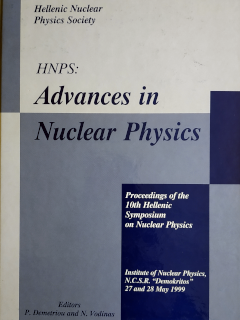Estimating the contamination resulting from hypothetical nuclear accidents during nuclear emergency exercises
Περίληψη
An assessment of the radiological contamination of Europe, following radioactive pollutant releases and using prognostic meteorological data is presented. A modified and simplified version of SHEAR code, a Lagrangian long-range transport and dispersion model, taking into account the wind shear effect, is used. This is possible by applying the diurnal differences in vertical mixing to the winds in the vertical layer used to calculate advection. In its present version the code takes account of dry deposition processes and different mixing heights for day and night conditions. Prognostic temperature and u, ν wind parameters every 6 hours for a total of 72, are provided by the National Meteorological Service of Greece in two levels 0 and 850 mb of pressure. The wind field is then calculated in both heights. This field forms an input to the SHEAR code. Plume direction and radioactive pollutant concentration have been calculated for hypothetical releases postulated during a recent ΝΕΑ/OECD exercise. The results of this study indicated that the code predicted well direction and concentration of the plume, in agreement with the predictions by other programs. Since the code in this version uses surface winds, at most, which are much weaker than the higher altitude winds used by other codes, the results of the plume spread are smaller in the present study. We believe that taking into account the surface winds during an eventual accident produces more realistic results. If predictions in more heights are available mixing heights would be calculated with greater accuracy, with consequent improvement of the results.
Λεπτομέρειες άρθρου
- Πώς να δημιουργήσετε Αναφορές
-
Synodinou, B. M. (2019). Estimating the contamination resulting from hypothetical nuclear accidents during nuclear emergency exercises. Annual Symposium of the Hellenic Nuclear Physics Society, 10, 194–202. https://doi.org/10.12681/hnps.2189
- Τεύχος
- Τόμ. 10 (1999): HNPS1999
- Ενότητα
- Oral contributions (deprecated)






